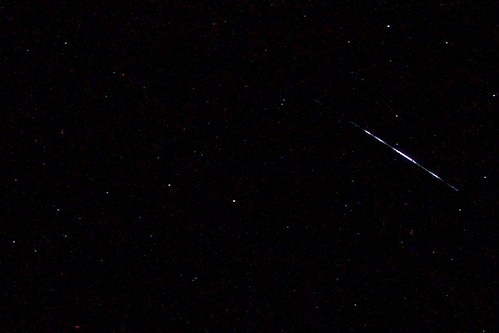
We are currently travelling through dust left behind by an asteroid called 3200 Phaethon, which we think is an extinct comet. As the Earth travels through space at an astonishing 70,000 mph, these bits of dust hit the atmosphere causing "shooting stars" as the dust burns up.
You can see these shooting stars throughout mid-December, but the main peak is from the 12th to the 14th of December where you could see up to two a minute under ideal conditions.
It is (unfortunately!) best to see shooting stars in the early morning, a few hours before sunrise, since that is when we are stood on the "front" of the Earth as it orbits around the Sun. It's a bit like driving through snow - it looks best looking forward where you see all the snow rushing towards you, and it's not so exciting when you look out of the back window.


